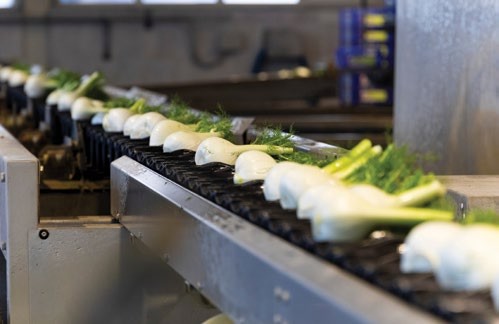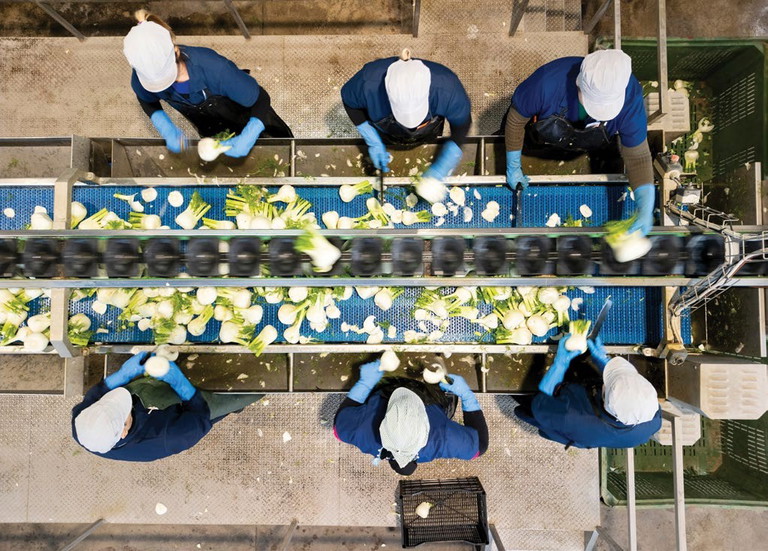BUSINESS quality assurance
QUALITY ASSURANCE
furphies
Part 2
Words Joel Dinsdale, Quality Assurance Coordinator, vegetablesWA
Fact from fiction
Last edition, we unpacked several QA furphies — those persistent myths that continue to muddy the waters in horticultural compliance. I’ve encountered plenty over the years, so it felt only right to keep the conversation going. For those who missed the first instalment (available online), here’s a brief recap.
We tackled misconceptions like:
• Organic certification exempting growers from MRL testing
• The idea that testing alone guarantees food safety
• Using household items like sugar bags to calibrate trade scales
• Misunderstandings around chemical scale calibration requirements
These furphies aren’t just harmless rumours — they can lead to costly mistakes. In this next edition, we’ll continue to separate fact from fiction and help growers stay sharp in an increasingly complex compliance landscape.

Dictionary
Furphy is defined in the Oxford Dictionary (Online) as:
“A rumour or story, especially one that is untrue or absurd”.
IN this edition, I’m focusing on HARPS version 2.0 related furphies I’ve encountered while supporting producers.
“I can complete my Freshcare audit (or base other scheme audit) then, later in the year when I’m ready I can then complete my HARPS v2 audit.”
Furphy — As a general rule, your base scheme audit must be completed in conjunction with your HARPS v2.0 audit. To separate the two, you need to apply for and be granted a program exemption. If HARPS v2.0 certification is required, ensure both audits are conducted at the same audit event.
“I’ve been told I need electronic rodent baits to obtain HARPS v2.0 certification.”
Furphy — If you’re holding, packing, or storing products or packaging on-site, you will need to have suitable pest control measures in place (look to your GFSI base scheme for details). Electronic rodent baits are not necessarily required to meet the compliance criteria of a base scheme audit for HARPS V2.0 certification.
“I can only do face-to-face HACCP training in preparation for HARPS certification.”
This is another furphy. HACCP training for HARPS v2.0 does not need to be conducted in a physical classroom.

The classroom can be virtual, provided the course is “trainer-led”. Before completing HACCP training for HARPS v2.0, you should ensure that the units of competency that you are enrolled in meet the criteria outlined in the HARPS v2.0 Standard criteria under section 4.1.
If you are unsure, please reach out to the HARPS Helpline on 1300 852 219 or email harps@harpsonline.com.au
“I don’t need to complete retention samples for bulk products under HARPS v2.0.”
This is a partial furphy — You’re not required to keep retention samples for bulk (loose fill) products if you can demonstrate retention samples are kept for the same batch (same harvest date and block) in pre-packed formats. However, if you supply only loose fill/bulk product to major retailers (as a Tier 1 or 2 producer), you must conduct retention sampling across the product’s shelf life, as required in your product specifications.
“I supply bins of cucurbits (melon/ pumpkin) to retailers under HARPS v2.0 certification and I can’t calibrate my scales as I don’t have a 300kg test mass.”
Furphy! HARPS v2.0 issued an updated exemption in December 2023. Producers can use a certified 20kg test mass to conduct daily scale calibrations. Essentially, the wording “the mass of the test weight shall be at or slightly above the maximum weight to be measured” does not apply.
There are several industry-wide exemptions that exist for HARPS v2. If you are maintaining compliance with the HARPS v2.0 standard and are not across these exemptions, then be sure to sign-up to the HARPS eNewsletter and check out the HARPS website https://harpsonline.com.au
MORE INFORMATION
Got a QA-related question you’d like answered? Or maybe you’ve spotted a furphy worth sharing with our readers? Reach out to joel.dinsdale@vegetableswa.com.au. I’d love to support and share your stories with the grower community.
